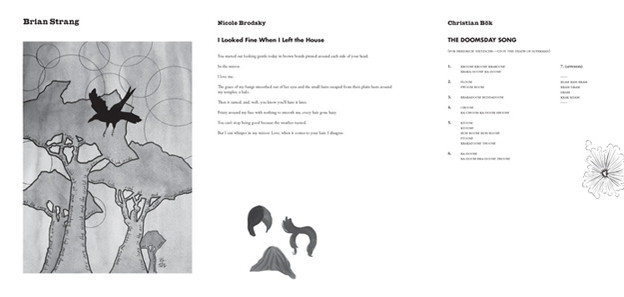Reconsidering the environment
A review of 'Kindergarde'

Kindergarde: Avant-Garde Poems, Plays, Stories, and Songs for Children
Kindergarde: Avant-Garde Poems, Plays, Stories, and Songs for Children
Children often have the ability to cut to the chase and say something without dissembling. Within such purity, gems often leave their small mouths, hence the saying, “From the mouth of babes … ” All children possess this capacity, but I suspect that for orphans — or perhaps any child with a difficult (so to speak) background — this ability to swiftly and directly see and analyze is honed.
(As I write this, I am in the midst of my fourth attempt at an international adoption — which is to say, orphans are on my mind, and I’ve met many in the past six or so years.)
Thus, as I read through Kindergarde whose writings are described as “for Children,” I looked for something that I felt was specifically for children practiced in swiftly considering and reconsidering their environment (whether their assessment is always correct is another story but they practice this process). By this, I meant something that would grab their attention RIGHT AWAY and then keep their attention. Their attention that’s direct and not yet very much diluted by others’ (adult) contexts. Something that grabs their eyes without the work having to be directed (by an adult) to their attention. Then something that, for some reason, would keep their attention ... and hopefully, after surviving their child-based, cut-to-the-chase skepticism, be judged as “cool” (or however kids say “cool” nowadays).
These parameters led me to text that is also visual. These parameters led me to Rachel Zolf’s witty “done."

Absolutely there is something to be said and valued about a parent and child reading a book together. Without meaning to diminish that shared, time-based experience, I focused on what I thought might be the point of a view of a child whose attention span is used to quick determinations. Perhaps, too, I am trying to approximate this particular point of view as a metaphor for a child growing up with so many possible opportunities for distraction thanks to technological advances (hello video games and social media!).
As you can see from the work, Zolf’s “done” was made by replicating a barcode thirteen times. So the child might respond to it as I did (well, as I type this I concede that I can’t speak on behalf of a child; I can only speculate that a child’s response might be like my own). The child might respond firstly with thinking or asking a companion nearby, “What’s that?”
Wondering “What is that?” is one of the most immediate ways to engage a reader or witness. The reader/witness’s interest has been sparked — important for grabbing any child’s attention.
I, as an adult, know about barcodes. As an author, I know of them specifically as one of the last things to put on a book during the book’s production process. The barcode, of course, is used on many other products besides the book. The barcode, indeed, is a symbol of something finished and, thus, available for pricing. Thus, the barcode is an appropriate “text” for a poem entitled “done.”
However, I don’t know if this works immediately for a child reader. A child with access to an adult who can explain the significance of barcodes — in case that child hasn’t noticed barcodes on the cereal boxes, et al. — can learn and then, hopefully, conclude as I do that Zolf’s application is clever.
But say the child is by him-, her-, hirself when the child first reads/views “done.” Where might the access be? Well, by the simple but effective positioning of the barcodes. There are three rows of barcodes each, followed by a single barcode. The eye naturally would expect the fourth row to be “completed” like the prior rows. Because the fourth row, though, is comprised of only one barcode, the child then can question on his/her/hir own whether ... “done” is really done. From there, several thoughts can ensue as the child pursues this train of thought. The child has become engaged. And, inadvertently, the child may even end up trafficking in the realm of philosophy — is “done” done? What causes something to be done? If it’s not done, why is it called “done”? Are the “done” rows lying about being done? Is it the fourth row that’s undone or is it the second, third, and fourth columns? And so on ...
Thus, do I love Rachel Zolf’s “done” — as a parent, I can see so easily how I can use it to engage with a child. And I imagine as I do above (though I don’t really know of course as I’m not the child) the fruitfulness of a child’s experience with this visual poem.
Eventually, the engagement can lead, too, to the vision underlying Kindergarde — how some artists experiment in making their art and don’t just rely on inherited forms. It would seem to me to be a particular perspective for which orphans and other children raised unconventionally (so to speak and to understate the matter) might have some empathy.